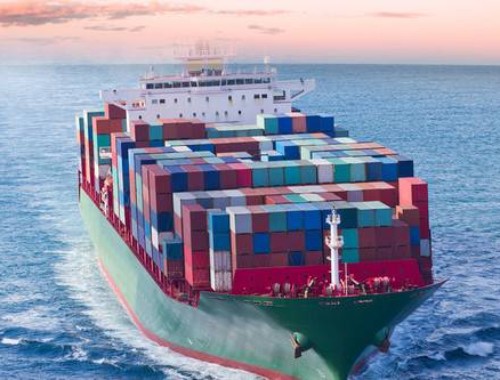Overnight up 25.8%, sky-high export freight rates hit again
Source:JJGLE.com
The freight rates on China/East Asia-Northern Europe routes hit a record high of $6,992 per FEU.
After the U.S. line freight rate soared by nearly 10% on the 28th at the end of last month compared with the previous day, it jumped from 3377 USD/FEU on December 31 to 3740 USD/FEU on January 1, an increase of 10.75%.
The freight rate of the China/East Asia-Northern Europe route hit a record high, reaching $6,992/FEU. Compared with the last day of 2020, December 31, the freight rate of $5,662 jumped 23.5% overnight.
According to the notice issued by the shipping company, following the increase in the surcharge in mid-December, some shipping companies began to implement the general rate increase (GRI) from January 1.
On January 1, CMA CGM, COSCO (for service contracts only) , Evergreen, HMM, ONE, Yang Ming and Zim announced a $1,000 asia-america GRI for each FEU;
In addition, Hapag-Lloyd listed the price of each FEU GRI on January 1 at US$1,500, including the previously delayed GRI.
Hapag-Lloyd will increase the new freight rates from Asia to Europe and the Mediterranean from January 1, 2021. Hapag-Lloyd also announced that it will charge GRI for all dry containers from East Asia to the United States and Canada from February 1, 2021.
Maersk issued an announcement stating that starting from January 1, 2021, 40-foot reefer containers from Mainland China, Hong Kong, China, Macau, China and Mongolia to the Nordic region will be charged a peak season surcharge of US$2,000 per box.
In addition, many carriers such as CMA CGM, COSCO, Evergreen, HMM, ONE, OOCL, YangMing and so on, serving the East Asia/U.S. trade routes have adjusted their fuel surcharges, effective from January 1 to March 31, 2021.
With local epidemics raging in various countries, there is a sense of paralysis in productivity. For Chinese enterprises who place orders themselves, there is also a variety of inner conflicts: on the one hand, orders are bursting; on the other hand, there is not enough containers. For example, Shenzhen Port, the busiest port, is said to have the most serious shortage of containers.
Industry analysts said that the “price increase” of container shipping was mainly due to the different degrees of economic recovery in countries around the world after the outbreak of COVID-19 epidemic. The current freight rate is almost at the highest level. With the passing of the peak transportation season and the recovery of the global economy, the freight rate will slowly fall.
-

National Bureau of Statistics: The retail sales of furniture in the first three quarters reached 120.5 billion, an increase of 20.7%
-

Malaysia has become the top ten furniture exporters of the world
-

North American furniture giant Flexsteel enters the field of solid wood with new furniture series
-

British designer FRED RIGBY reveals debut furniture collection-everyday

 沪公网安备31010402003309号
沪公网安备31010402003309号



